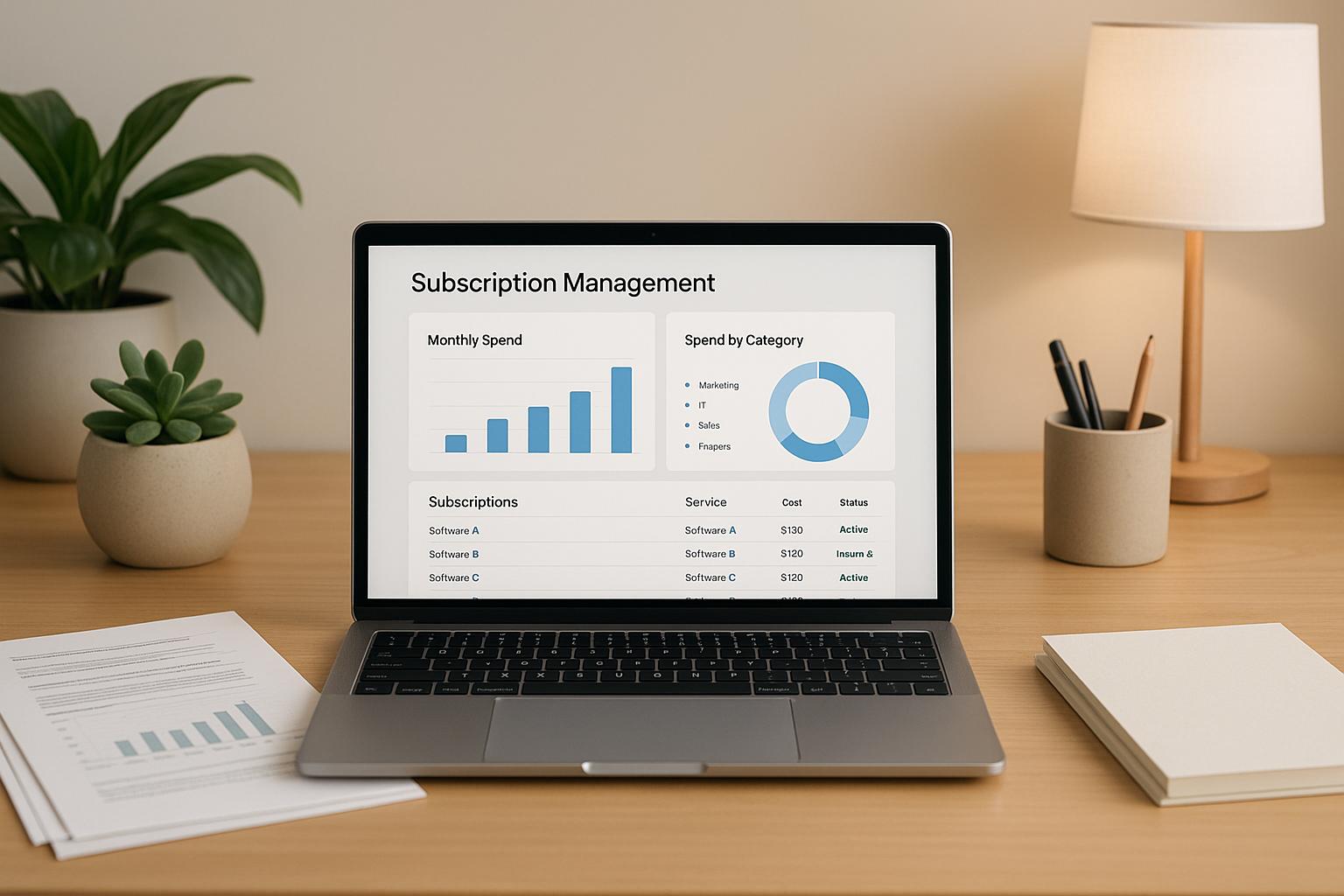AI Risk Management Frameworks for Compliance

72% of companies are adopting AI, but only 9% are ready to manage its risks. This gap leaves businesses exposed to compliance violations, data breaches, and reputational damage.
Here’s how businesses can prepare:
- Key Risks: AI introduces challenges like data privacy issues, algorithmic bias, operational failures, and security breaches.
- Regulations to Watch:
- EU AI Act: Strict rules for high-risk AI systems, with fines up to 7% of global revenue.
- NIST AI Framework: U.S. guidance for building safe, transparent AI systems.
- ISO Standards: Certification for responsible AI practices.
- Benefits of Compliance: Companies with strong AI practices save an average of $3.05M per data breach and build trust with stakeholders.
Quick Tip: Start by conducting risk assessments, forming an AI governance team, and aligning with frameworks like NIST or ISO.
| Framework | Focus | Key Features |
|---|---|---|
| NIST AI RMF | U.S. voluntary guidelines | Govern, Map, Measure, Manage functions |
| EU AI Act | Legally binding in the EU | Risk-based classification, strict penalties |
| ISO Standards | Global certification | Plan-Do-Check-Act for AI governance |
Actionable Steps:
- Identify risks in your AI systems.
- Align with relevant regulations (e.g., EU AI Act, NIST).
- Monitor and document AI performance regularly.
AI compliance isn’t just about avoiding penalties - it’s a smart investment for long-term growth.
Major AI Risk Management Frameworks
As regulations around artificial intelligence grow more complex, businesses, especially those in their growth phase, need clear strategies to handle AI risks effectively. Three prominent frameworks have emerged as go-to solutions for organizations aiming to navigate compliance while maintaining efficient operations.
The NIST AI Risk Management Framework

The NIST AI Risk Management Framework (AI RMF) is a voluntary guide aimed at improving the reliability and trustworthiness of AI systems. It focuses on critical attributes like validity, safety, security, accountability, transparency, privacy, and fairness. The framework is structured around four key functions - Govern, Map, Measure, and Manage - which can be applied at any stage of an AI system's lifecycle. This structure allows organizations to adapt the guidance based on their specific needs and constraints.
Flexibility is a cornerstone of the NIST framework, encouraging companies to align their risk management practices with existing laws and standards. For instance, a fintech startup might prioritize privacy and fairness, whereas a healthcare company could focus more on safety and reliability.
A real-world example highlights the importance of this framework: In January 2025, Apple faced backlash when its AI-powered news summarization tool misrepresented sensitive topics. This led to a temporary system halt and subsequent improvements, underscoring the need for AI systems to align with an organization’s values. To get started, businesses can create an AI Bill of Materials (AI-BOM) - a detailed inventory of AI assets that identifies vulnerabilities and promotes ongoing risk management.
In July 2024, NIST expanded its framework by introducing the Generative AI Profile, addressing challenges tied to the fast-paced evolution of generative AI systems. This addition ensures the framework stays relevant as new technologies and regulations emerge.
While the NIST framework lays a strong foundation for managing AI risks, companies must also navigate legally binding regulations like the EU AI Act.
European Union AI Act
The EU AI Act is the first globally binding regulation designed to address AI risks comprehensively. Passed by the European Parliament on March 13, 2024, with a decisive vote of 523–46, the Act classifies AI systems into four risk levels: unacceptable, high, limited, and minimal.
Notably, the Act has an extraterritorial reach, meaning any company whose AI systems affect EU users must comply, regardless of its location. This has major implications for U.S.-based businesses. As one industry leader put it:
"The AI Act has implications that go far beyond the EU. It applies to any organisation with any operation or impact in the EU, which means the AI Act will likely apply to you no matter where you're located."
The penalties for non-compliance are steep, with fines reaching up to 7% of global revenue or $38 million, whichever is higher. For example, a company earning $50 million annually could face fines of around $3.5 million. High-risk AI applications - such as those used in hiring, financial services, education, and medical devices - must meet stringent standards for quality, transparency, and risk management. For growing companies, this highlights the need for tailored compliance strategies.
Here’s a simplified comparison of key AI applications under the EU AI Act:
| AI Application | EU AI Act Requirements | US Compliance Considerations |
|---|---|---|
| AI in hiring processes | High-risk classification; requires risk assessments | Oversight through AI Bill of Rights and federal actions |
| Customer service chatbots | Must disclose AI interactions to users | No specific federal requirements |
| Medical device AI | High-risk; must comply with medical regulations | Subject to FDA oversight |
| Facial recognition | Restricted usage with specific exceptions | Governed by NIST testing for fairness and efficacy |
ISO Standards for AI Risk Management

Adding to the NIST and EU approaches, ISO standards provide a globally recognized framework for AI governance. The ISO/IEC 42001:2023 standard, introduced recently, offers a certification pathway that demonstrates an organization’s commitment to responsible AI management. Built on the familiar Plan-Do-Check-Act methodology, it helps companies establish, implement, and continuously improve their AI practices. This standard works hand-in-hand with ISO/IEC 23894:2023, which focuses specifically on managing AI-related risks.
Adopting ISO standards not only strengthens risk management but also builds trust with stakeholders and enhances credibility - key advantages for companies seeking partnerships, funding, or market expansion. For example, organizations pursuing ISO 42001 certification often maintain detailed records, such as AI model designs, performance monitoring logs, data audit trails, and product launch approvals, to demonstrate compliance and operational rigor.
Interestingly, a survey revealed that while 87% of executives claim to have AI governance frameworks in place, fewer than 25% have fully operationalized them. ISO standards help bridge this gap by offering actionable, evidence-based guidance. Tools like STRIDE threat modeling - which identifies risks ranging from prompt injection during design to denial-of-service attacks during operation - can further enhance risk management strategies.
Together, the NIST AI RMF, the EU AI Act, and ISO standards provide a comprehensive toolkit for managing AI risks. These frameworks address various facets of compliance and operational challenges, equipping growth-stage companies to navigate the complexities of AI governance effectively.
How to Implement AI Risk Management
Turning compliance into actionable operations is at the heart of AI risk management. For growth-stage companies, this process can be tricky. They need to balance limited resources with the demand for a solid risk management system.
Conducting AI Risk Assessments
The first step in managing AI risks is a thorough risk assessment. This involves five key stages: preparation, identifying risks, measuring them, mitigating those risks, and ongoing monitoring.
Start by building a strong team. Form an AI Governance Committee that includes representatives from IT, legal, compliance, risk management, and business units. Assign specific roles like AI Risk Officer, Data Privacy Lead, and Ethics Specialist. This mix ensures that technical, legal, and business perspectives are all part of the decision-making process.
Next, define the scope of the assessment. Clearly identify which AI systems are under review and the focus - whether it's regulatory compliance, operational stability, or ethical factors. For example, a fintech company might zero in on AI handling customer transactions, while a healthcare startup might prioritize diagnostic tools affecting patient outcomes.
The risk identification phase involves mapping out AI systems and pinpointing potential risks. This includes analyzing the system's purpose, functionality, data usage, and stakeholders. Interestingly, only 18% of companies align compliance with risk activities, highlighting the need for a structured approach.
During the evaluation, use a risk matrix to assess the severity and likelihood of each risk. Classify risks into categories like unacceptable, high, limited, or minimal, following the EU AI Act's framework.
Documentation is critical for accountability and compliance. Keep detailed records of identified risks, mitigation steps, and their effectiveness. These records not only serve as audit evidence but also help track progress in risk management.
Statistics reveal that 79% of senior IT leaders worry about AI-related security breaches, while 73% are concerned about biased outcomes. These numbers emphasize the importance of addressing both technical vulnerabilities and ethical challenges.
Once risks are identified and documented, tailor your approach to fit your industry’s needs.
Adapting Frameworks to Your Business
After identifying risks, the next step is to customize risk management frameworks to suit your company's specific challenges and objectives. Start by creating a classification system that ranks AI models based on their potential impact - whether societal or operational.
Continuous monitoring is essential. Use platforms that track compliance and model performance in real-time. These tools can detect issues like model drift, data privacy violations, and security breaches early. This is particularly important, as 61% of organizations admit that AI is advancing faster than they can manage its risks.
For regulated industries, explainable AI (XAI) is a must. Making AI decisions transparent builds trust with users, auditors, and regulators. This is especially crucial for growth-stage companies aiming to establish credibility.
Tailor your data protection measures to meet industry standards. Use techniques like encryption, anonymization, and secure access controls to safeguard sensitive information.
Different industries will have varying priorities. For example, a manufacturing company using AI for predictive maintenance may focus on safety and operational continuity. In contrast, an e-commerce platform might prioritize customer data protection and fairness in algorithms.
Also, include human oversight for critical decisions. This "human-in-the-loop" strategy ensures that AI recommendations are reviewed by qualified professionals, adding a layer of accountability without sacrificing efficiency.
To stay ahead, companies should regularly review policies, train staff, and update frameworks as risks evolve. With 32% of businesses planning to introduce additional frameworks to manage AI risks, adaptability is key to long-term success.
Setting Up AI Governance Structures
Your risk assessment findings will guide the creation of a governance structure for AI oversight. This structure should clearly define roles, responsibilities, and decision-making processes. Surprisingly, only 35% of companies currently have an AI governance framework, even though 87% of business leaders aim to implement AI ethics policies by 2025.
Start by forming an AI Governance Committee with representatives from IT, legal, and operations. Use a RACI matrix (Responsible, Accountable, Consulted, Informed) to clarify accountability. This ensures everyone knows their role in governance tasks.
Policies and procedures form the backbone of governance. Develop documents that guide AI activities from development to deployment and monitoring. These should address ethical concerns, compliance needs, and operational standards aligned with your business goals.
"Governance isn't just about compliance - it's about trust. Companies that fail to build AI transparency into their systems will lose customer confidence."
– James, CISO, Consilien
Training programs are essential to ensure employees understand their roles in AI governance. Regular sessions should cover regulations, ethical considerations, and practical guidelines. This is especially important since less than 20% of companies conduct regular AI audits.
Implement real-time compliance monitoring to track regulatory changes and assess system behavior continuously. These systems help organizations stay ahead of new requirements and spot issues early.
To protect AI systems, integrate cybersecurity measures like adversarial attack detection and model integrity checks. While 91% of security teams use generative AI, 65% admit they don’t fully understand its risks, making specialized safeguards critical.
Accountability mechanisms must address who is responsible when AI systems make harmful decisions. Governance frameworks should establish clear decision-making hierarchies and escalation procedures to ensure human accountability.
"One of the biggest challenges in AI governance is accountability. If AI makes a harmful decision, who is responsible? Governance frameworks must address this clearly."
– James, CISO, Consilien
Lastly, conduct regular compliance audits. These audits should evaluate AI systems against data privacy laws, ethical guidelines, and regulatory standards. They help identify vulnerabilities, biases, and governance gaps while reinforcing a commitment to responsible AI practices.
sbb-itb-e766981
Financial Planning for AI Risk Management
When done right, financial planning can turn AI compliance into a strategic advantage. For growth-stage companies, balancing limited resources with the need for robust risk management is no small feat. The trick is to fully grasp the costs and benefits, ensuring that AI compliance aligns seamlessly with business growth goals. By integrating risk management with smart financial planning, companies can set the stage for sustainable success.
Cost-Benefit Analysis of AI Compliance
Breaking down the financial side of AI compliance requires a closer look at both direct and indirect costs. Direct expenses include hiring risk officers, setting up committees, conducting bias testing, and implementing monitoring tools. Off-the-shelf solutions can range from $99 to $1,500 per month, while custom-built systems may cost up to $500,000. Indirect costs cover essentials like training data (which can run between $10,000 and $90,000), staff training, audits, and documentation.
Failing to comply, however, can be far more expensive. In 2023, fines for AI-related compliance violations surpassed $2 billion globally. For example, GDPR violations can cost up to €20 million or 4% of a company’s global revenue, and HIPAA penalties can reach $1.5 million per violation. Meanwhile, IBM reported a 74% increase in AI-driven cyberattacks in 2023, underscoring the steep risks of inadequate security.
On the flip side, the return on investment (ROI) for AI compliance is impressive. On average, AI investments yield a 3.5X return, with 5% of companies reporting returns as high as 8X. Real-world examples show how compliance efforts can pay off in a big way.
Tangible benefits include greater efficiency, smarter decision-making, and lower operational costs. In financial services, for instance, AI has cut case resolution times by 45%, slashing costs while boosting customer retention by about 35%. AI-based cost estimates are also up to 35% more accurate than traditional methods.
Intangible benefits provide lasting value. These include stronger market positioning, an enhanced reputation, and deeper trust from stakeholders. Companies that prioritize compliance often find new market opportunities, as many clients prefer to work with vendors who meet regulatory standards.
Integrating AI Risk Management with Financial Planning
To make the most of AI compliance, treat it as a strategic investment rather than a regulatory burden. Start with a detailed cost-benefit analysis that accounts for both short-term expenses and long-term gains, such as reduced legal risks, operational efficiencies, and improved market positioning.
When it comes to budgeting, a phased approach works best. Begin with a pilot program targeting high-risk AI applications, then expand based on results and available resources. This method allows companies to prove value while managing cash flow - an essential consideration for growing businesses.
Cash flow forecasting is another critical step. Map out current AI projects and their associated risks to prioritize spending where it matters most, focusing on areas where non-compliance could lead to hefty fines or operational setbacks.
Integrating compliance costs into broader financial systems ensures alignment with overall technology budgets and strategic growth plans. This helps justify investments by connecting them to key business objectives like market expansion or customer acquisition.
Timing is also key. With AI adoption in finance expected to jump from 45% in 2022 to 85% by 2025, early investment in compliance can provide a competitive edge. Tracking performance metrics - such as cost savings, error reductions, and faster decision-making - can help demonstrate the value of these investments to stakeholders and investors.
"AI presents an unparalleled opportunity for SMEs to scale operations, but it requires a meticulous approach to risk assessment and a robust compliance framework to truly reap its benefits."
- Ciaran Connolly, ProfileTree Founder
These strategies set the stage for expert advisory support, which can further strengthen your approach to AI compliance.
How Phoenix Strategy Group Supports AI Compliance

Phoenix Strategy Group offers tailored support to help businesses integrate AI risk management into their growth strategies. By combining financial expertise with strategic planning, they ensure AI compliance investments align with broader business goals.
Their financial planning and analysis (FP&A) services help companies calculate the costs and benefits of AI compliance. This includes detailed financial projections that consider implementation costs, ongoing expenses, and expected returns.
With data engineering expertise, Phoenix Strategy Group builds scalable systems for monitoring, reporting, and maintaining compliance. Their solutions optimize costs by streamlining data architecture and ensuring efficiency.
When it comes to mergers and acquisitions, their M&A advisory services are invaluable. A strong AI compliance framework can significantly enhance company valuations, while gaps in compliance can derail deals or lower valuations.
The firm’s integrated financial modeling provides a clear picture of how AI compliance impacts overall business performance. These models factor in compliance costs, risk mitigation benefits, and operational improvements, offering a comprehensive financial overview.
Their Monday Morning Metrics system keeps companies informed about AI compliance costs and returns through real-time financial data. This allows for quick adjustments to compliance strategies based on performance and evolving regulations.
For businesses needing capital, Phoenix Strategy Group offers fundraising support, helping companies position AI compliance as a competitive advantage. They demonstrate to investors how compliance frameworks drive scalable growth and minimize risks.
Building Your AI Compliance Strategy
Creating a solid AI compliance strategy is essential for long-term growth and staying competitive. With 72% of businesses now leveraging AI and regulations constantly changing, companies that prioritize compliance will be better positioned to succeed in an AI-driven economy.
The most effective compliance strategies treat regulations not as obstacles but as opportunities to enhance business operations. Research shows that organizations with centralized AI governance are twice as likely to scale AI responsibly and efficiently. This highlights the need for a well-rounded approach that grows alongside your business and adapts to new regulatory demands.
Start by forming a cross-functional team that includes legal, compliance, IT, data science, and business leaders. This team ensures compliance is embedded into AI systems from the very beginning. Assign clear roles for monitoring, escalation, and review processes to maintain accountability throughout the AI lifecycle.
Next, align your AI systems with applicable regulations such as GDPR, HIPAA, or the EU AI Act. Different industries and jurisdictions have specific compliance requirements, so it’s crucial to identify which standards apply to your AI use cases. Classify your AI systems by risk level - minimal, limited, or high-risk - and adjust your controls accordingly. For example, the EU AI Act, set to take effect in February 2025, includes penalties of up to €35 million or 7% of annual revenue, making compliance a high-stakes priority.
AI compliance also demands transparency, ongoing evaluation, and thorough documentation. Set up real-time monitoring systems and approval workflows that include human oversight. This ensures accountability and helps prevent misuse at every stage of the AI lifecycle.
Strong data governance is another cornerstone of compliance. Start by defining and enforcing data quality standards, tracking data lineage, and aligning AI policies with privacy laws. These practices not only mitigate compliance risks but also streamline overall governance efforts.
While compliance requires investment, the cost of non-compliance can be far greater. Former U.S. Deputy Attorney General Paul McNulty put it best:
"If you think compliance is expensive, try non-compliance."
Consider the case of iTutor, which faced legal action after its AI system rejected female applicants over the age of 55. Similarly, Clearview AI was fined over $30 million in 2024 for unethical use of private user data. These examples underscore the financial and reputational risks of failing to meet compliance standards.
To stay ahead, appoint a dedicated compliance lead to monitor global and regional regulations and adjust your strategy as needed. Nearly 70% of companies using AI plan to increase their investment in AI governance over the next two years, recognizing that compliance is an ongoing process. By taking these steps, your organization will be better prepared for sustainable growth in an evolving regulatory landscape.
FAQs
What are the key differences between the NIST AI Risk Management Framework and the EU AI Act, and how can companies decide which one to focus on?
The NIST AI Risk Management Framework (AI RMF) and the EU AI Act offer two distinct methods for addressing AI risks. The NIST AI RMF is a voluntary set of guidelines aimed at helping organizations of all sizes handle AI-related risks in a flexible way. It focuses on key principles like trustworthiness, safety, and accountability, making it a practical tool for companies looking for adaptable AI governance solutions. In contrast, the EU AI Act is a legally binding regulation that classifies AI systems based on their risk levels. It enforces strict compliance rules for high-risk applications, particularly in fields like healthcare and finance.
For companies operating within the EU or serving EU customers, complying with the EU AI Act should be a top priority to avoid legal consequences. Meanwhile, organizations outside the EU might find the NIST AI RMF more appropriate, especially if they need a less rigid approach to managing AI risks. The best choice depends on your company’s geographic presence, risk tolerance, and overall strategic goals.
How can small and medium-sized businesses (SMBs) implement effective AI compliance strategies with limited resources?
Small and medium-sized businesses (SMBs) can tackle AI compliance effectively by focusing on smart and manageable strategies that fit their resources. One way to do this is by leveraging tools that automate compliance tasks, such as monitoring regulatory changes and organizing documentation. These tools not only save time but also cut down on administrative work, helping SMBs stay compliant without stretching their resources thin.
Another key element is fostering collaboration across departments. When teams from various areas of the business work together, they can pinpoint practical AI applications and ensure compliance becomes a natural part of everyday operations. Testing AI solutions in a secure, controlled setting is another smart move. This allows businesses to see how AI fits into their goals without committing to large upfront costs. Taking small, measured steps helps manage risks while aligning AI projects with broader business objectives.
By focusing on automation, teamwork, and cautious experimentation, SMBs can address AI compliance challenges effectively while optimizing their available resources.
What are the long-term advantages of aligning AI systems with ISO standards, and how can it enhance a company's reputation and market potential?
Aligning AI systems with ISO standards, like ISO/IEC 42001, can have a meaningful impact on a company’s growth and reputation. Following these standards shows a clear dedication to ethical AI practices, regulatory compliance, and transparency. This not only fosters trust among customers, investors, and stakeholders but also helps reduce risks tied to bias, misinformation, and data privacy concerns.
Beyond risk management, ISO compliance can position businesses as leaders in responsible AI governance, paving the way for expansion in regions with stringent regulations, such as the European Union. It can also make companies more appealing to potential partners that value ethical AI practices. In the long run, aligning with these standards can streamline operations, improve customer satisfaction, and strengthen a company’s competitive edge in the market.




